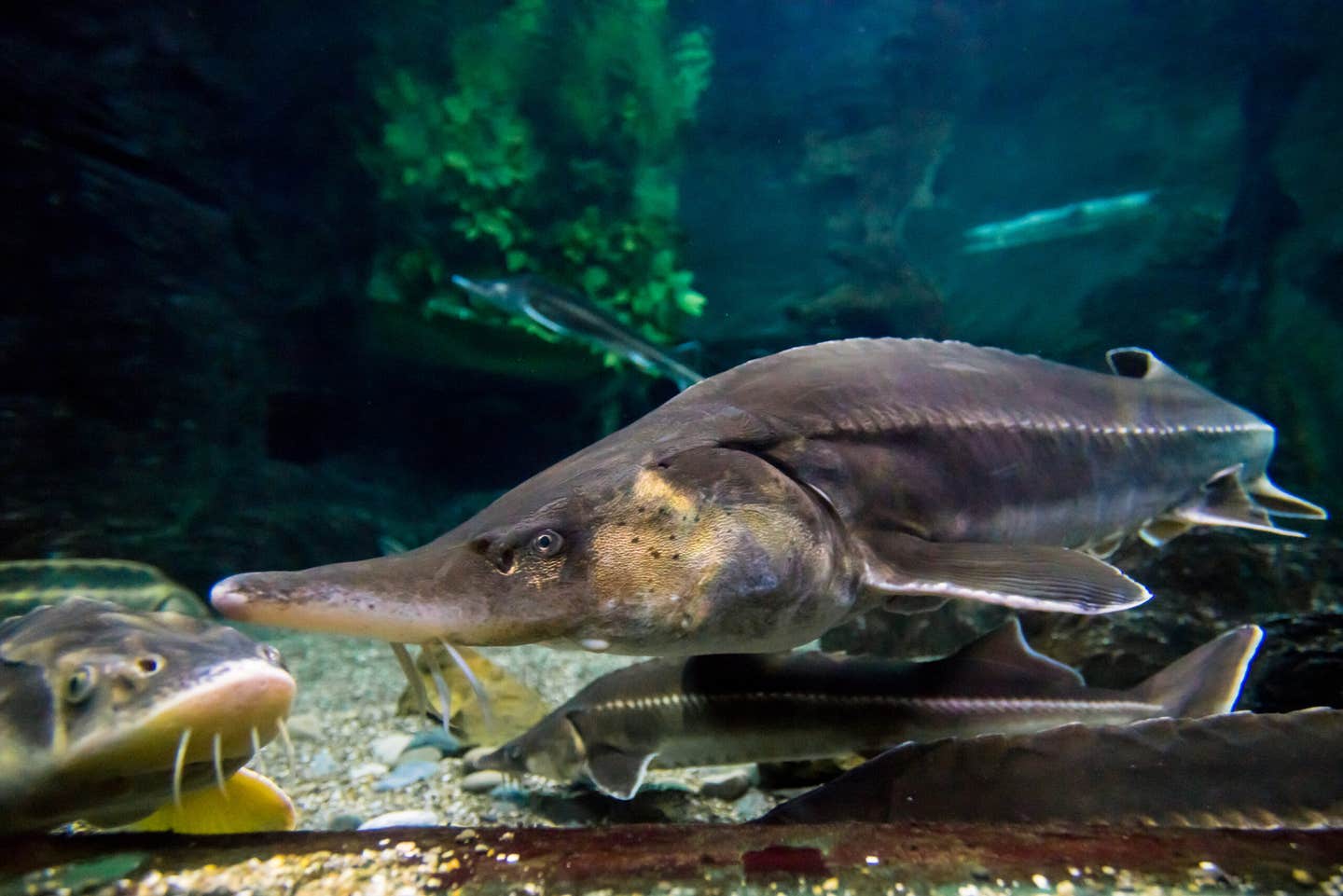Triumphant return of ‘living dinosaur’ to Big Stone Lake in Minnesota
Once wiped out by overfishing and pollution, lake sturgeon are thriving again in Big Stone Lake thanks to decades of restoration and research.

Lake sturgeon return to Big Stone Lake after 80 years, marking a major ecological recovery in Minnesota. (CREDIT: Shutterstock)
For the first time in nearly 80 years, lake sturgeon — ancient fish that can grow up to a tall man's length — are once more flowing through the waters of Big Stone Lake, a 26-mile-wide border lake shared by Minnesota and South Dakota. The restoration is a rare success story of environmental turnaround decades in the making.
A Species Once Lost
Long before settlers arrived, lake sturgeon had inhabited the rivers and lakes of the Northern Great Plains in abundance. In the late 1800s, they were so common in Big Stone Lake that commercial fishermen considered them nothing but a nuisance. The giant fish — sometimes more than 200 pounds and longer than eight feet — ripped through fishing nets with abandon. Considered worthless, they were slaughtered by the thousands and burned for fuel to steamships.
Overharvesting, water pollution, and river damming eliminated them by the middle of the 20th century. The most recent Big Stone lake sturgeon was a beachcombing find in 1946. For many decades, it appeared that the species had become extinct from the area.
A Vision for Restoration
That shifted in 2001 when veteran Ortonville fisheries supervisor Norm Haukos recruited a local coalition to support a bold idea: return sturgeon to Big Stone Lake. But first, the lake's polluted waters needed to be rehabilitated.
In the 1960s, several surrounding communities were releasing raw sewage into the lake. Starting in 1983, a gigantic cleanup effort supported by the Environmental Protection Agency provided grants for upgraded wastewater treatment systems and animal waste management projects. The improvements gradually won the lake's status from highly polluted to moderately healthy — enough to again allow native fish.
By 2014, the moment had come for a comeback. In 2014, 6,500 baby sturgeon called fingerlings were introduced into the lake. Every year, more were added, and now more than 44,000 fish exist to date. Now, some are reaching quite remarkable lengths, and it seems that not only is the population surviving, but it is thriving.
Learning from the Comeback
This fall, South Dakota State University scientists, U.S. Geological Survey scientists, and the South Dakota Game, Fish and Parks Department will begin a three-year study to identify whether these fish are moving toward natural reproduction — the restoration culminaty.
It is being led by SDSU professors Steven Chipps and Alison Coulter. The crew will place about 50 sturgeon with small ultrasonic transmitters that send pings picked up by underwater microphones. The acoustic tags will monitor where the fish travel around the lake and its connected waterways.
"I want to know the movement patterns of these fish," Chipps said. "Seasonally, where are they going to be? Are they gathering somewhere? Without tagging and tracking, none of that would be known."
The researchers will also take a blood sample during spring to determine whether any of the males or females have reached sexual maturity. The males are generally ready in 8 to 22 years, and the females can take up to three decades to mature. If only a few mature males are discovered by researchers, it might be the start of an independent population.
Reconnecting Lost Pathways
Mobility is the biggest threat to sturgeon. Historically, sturgeon moved upstream into the shallow, boulder-filled river bottoms to spawn. But damming of Minnesota River and its tributaries during the 20th century blocked their routes. Without spawning access, the species had no chance to reproduce.
That's starting to happen. Over the past decade, five dams were taken out of the Minnesota River system to reconnect. "Connectivity is always a good thing for fish," said BJ Bauer, a fisheries specialist with the Minnesota Department of Natural Resources. "It's particularly good for sturgeon.
Another project in the Browns Valley vicinity will further improve upstream passage, potentially opening up new spawning ground upon maturation. Should sturgeon successfully reproduce naturally, the population can expand beyond Big Stone Lake to the Minnesota River and beyond.
Echoes of Success
The Big Stone restoration is comparable to activity further upstream in the Red River basin, where the agencies started a 20-year program of stocking in 2002 and removed or modified barriers as well. Biologists discovered in 2019 the first mature female sturgeon in the basin, and they verified successful spawning for the first time in more than a century by 2022.
That's the first time that we were able to document spawning in over 100 years," said Nick Kludt, DNR fisheries specialist on the Red River project. He calls the same discovery at Big Stone a big ecological win.
Early signs are promising. Some fish caught by anglers in Big Stone Lake measure over 55 inches — approaching the size of sexually mature adults. “With the abundance of sturgeon we’re seeing out on the lake, we’re very pleased and encouraged by their survival rate,” Bauer said.
Nature’s Slow but Steady Recovery
Lake sturgeon are among the continent's oldest and most slowly evolving fish. They live over 150 years, but only reproduce every few decades. That gradual evolution and long life once enabled them to endure ice ages, but forced them past the point where they could come back after humans overhunted them. "In a 40-year period we were able to crash the population," Kludt said.
Now, scientists and wildlife conservationists are tracking nature's calendar. "It's a long process," Chipps said. "Because lake sturgeon mature older, it could be 30 years or more before you see it play itself out."
For now, Big Stone Lake has only catch-and-release sturgeon fishing allowed. Harvesting may be feasible down the road, but only if the population is determined to be self-sustaining.
Related Stories
- First-ever 'grumpy' fish species discovered in the Red Sea
- 90% of freshwater fish in US carry dangerous human-infecting parasites
- Do fish make noise? New technology lets the public hear coral reefs up close
Like these kind of feel good stories? Get The Brighter Side of News' newsletter.
Mac Oliveau
Science & Technology Writer
Mac Oliveau is a Los Angeles–based science and technology journalist for The Brighter Side of News, an online publication focused on uplifting, transformative stories from around the globe. Passionate about spotlighting groundbreaking discoveries and innovations, Mac covers a broad spectrum of topics—from medical breakthroughs and artificial intelligence to green tech and archeology. With a talent for making complex science clear and compelling, they connect readers to the advancements shaping a brighter, more hopeful future.



